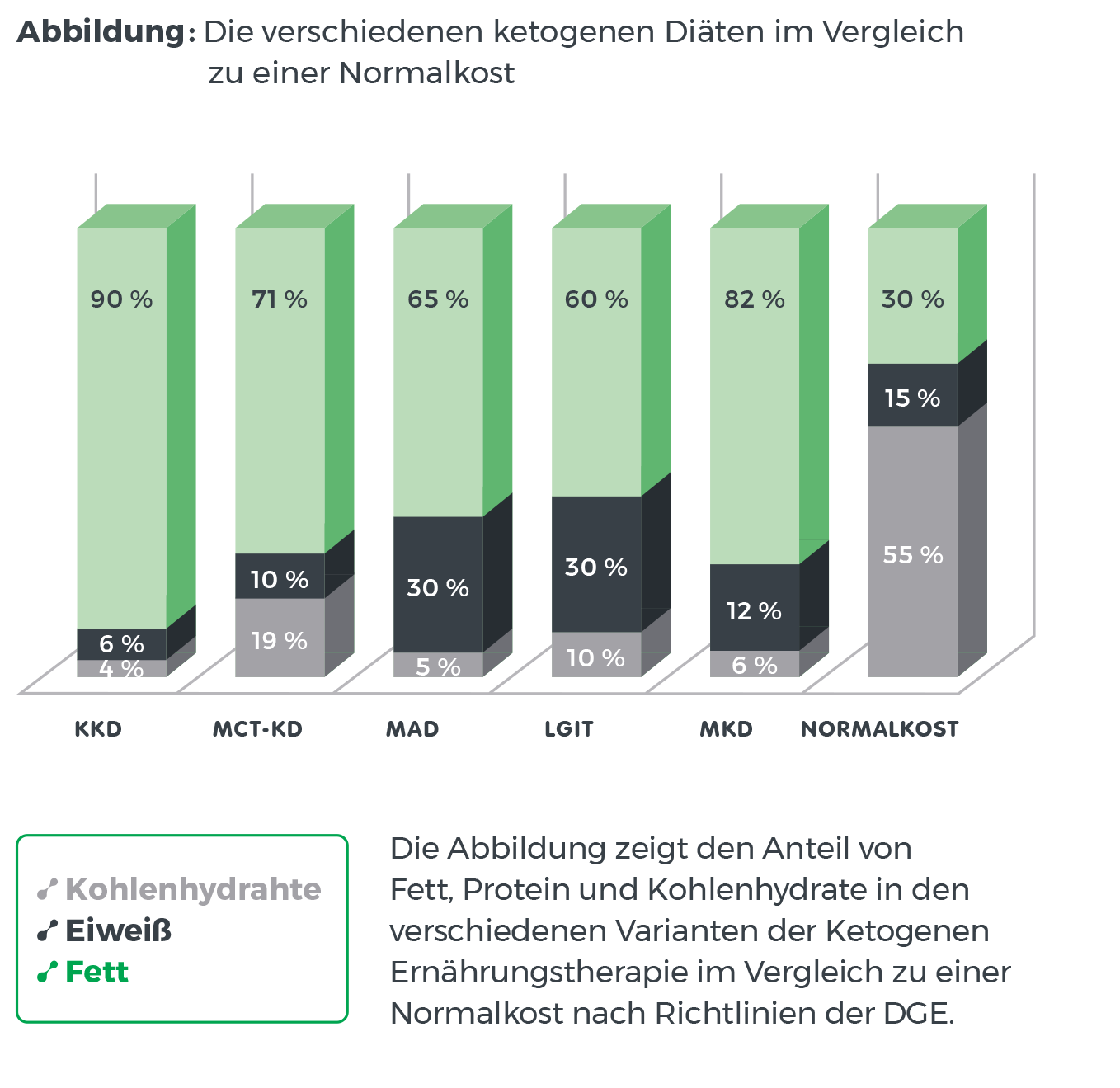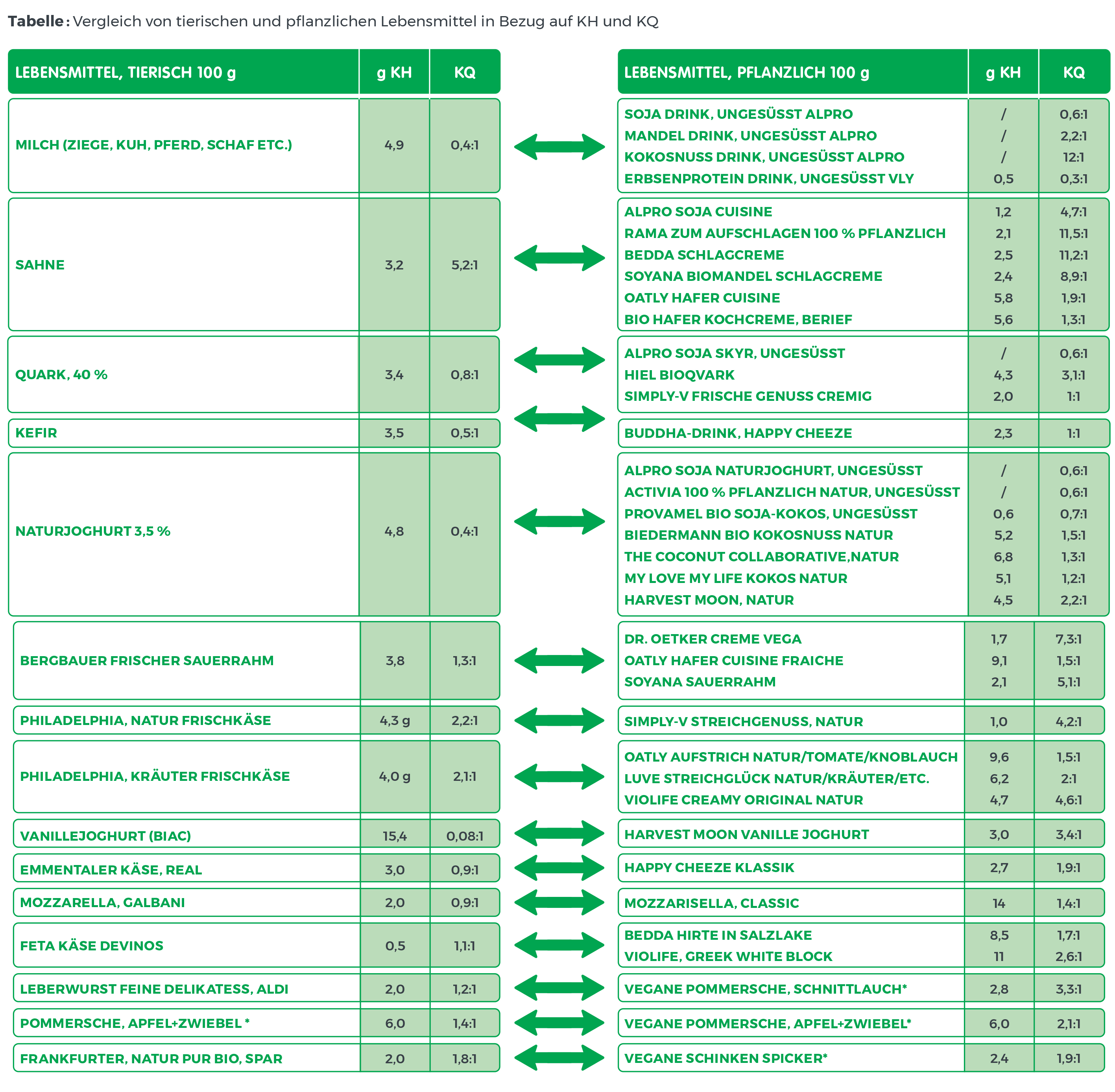
Die ketogene Ernährung aus ernährungsmedizinischer Sicht

Die ketogene Ernährungstherapie (KET) wird bereits seit 1921 für verschiedene Formen der Epilepsie als Therapieoption, welche einen gleichen Stellenwert wie die Medikamententherapie hat, eingesetzt. Die Einstellung auf eine ketogene Ernährung erfolgt in einer neurologischen Klinik nach Kontrolle der Blutwerte und Genetik sowie einem Vorgespräch und wird immer unter Aufsicht eines Neuropädiaters (Kinder) oder Neurologen (Erwachsene) sowie unter Anleitung einer Ernährungsfachkraft umgesetzt. Die Einstellung hat das Ziel, den Patienten auf eine stabile Ketose einzustellen, um die Anfallssituation zu verbessern.
Hat der Patient nach max. drei Monaten keine Anfallsreduktion von mindestens 50 %, wird die KET abgebrochen. Eine ketogene Ernährungstherapie wird an dem ketogenen Quotienten (KQ) gemessen: Fett geteilt durch Eiweiß + Kohlenhydrate. Daraus ist ersichtlich, dass es sich bei einer KET nicht um eine Low Carb Ernährung handelt, welche einen höheren Eiweißgehalt hat. Der Fokus einer Ketogenen Ernährungstherapie liegt auf einer fettreichen Ernährung, welche eiweißbilanziert und kohlenhydratarm sein sollte. Eiweiß kann im selben Maße die Ketose senken wie Kohlenhydrate (über die Gluconeogenese) und wird daher bilanziert eingesetzt, d.h. die Vorgaben der DGE beachtet - aber nicht als Sättigungsbeilage gegeben!
Aus einer Vielzahl an Studien ist heute bekannt, dass eine hohe Zufuhr an tierischen Produkten Krankheiten verursacht. Ausnahme sind hierbei tierische Produkte aus grasgeführter Weidehaltung (nicht bio!). Solche tierischen Produkte sind allerdings sehr teuer und schwer zu erhalten. Nur etwa 0,7 % der deutschen Landwirtschaft wird in dieser Form genutzt. Heute wird die „planetary health diet“ Ernährungsweise von der WHO empfohlen und sollte auch in einer KET umgesetzt werden. Hierfür sollte der Verzehr von tierischen Produkten reduziert werden (max. 300 g Fleisch bzw. 200 g Fisch pro Woche bzw. 250 g Käse pro Tag. Auch eine vegane Ernährung wird hier empfohlen). Nüsse und Hülsenfrüchte dienen täglich als Eiweißträger. Insbesondere Soja - mit seinem hochwertigem Aminosäureprofil und geringem Kohlenhydratanteil - eignet sich hervorragend, um tierisches Eiweiß zu ersetzten. Soja, welches für den menschlichen Verzehr gepflanzt wird, wird nicht in Lateinamerika, sondern in der EU angebaut und ist nicht genmanipuliert. Soja aus den Regenwäldern dient zur Fütterung von Tieren (z.B. in der Massentierzuchthaltung sowie Fischen in der Aquakultur).
Auch Erbsen oder Lupine können gut als Ersatz für tierisches Eiweiß eingesetzt werden. Milchprodukte eignen sich generell nicht besonders gut für eine kohlenhydratarme Ernährung. Das liegt vor allem am teilweise recht hohen Kohlenhydratgehalt. Zum Beispiel enthält eine Milch (3,5% Fett) 4,9 g KH, Joghurt 4,1 g KH und Sahne 3,4 g KH je 100 g. Bei der Berechnung des ketogenen Quotienten (KQ) wird deutlich, dass bei einem Einsatz von kohlenhydratreichen Milchprodukten entweder mehr Fett eingesetzt oder die Eiweißzufuhr gesenkt werden muss. Beides ist vermeidbar, wenn kohlenhydratfreie Milchalternativen in der Ernährung verwendet werden. Ungesüßter Sojadrink bzw. ungesüßter Sojajoghurt mit je 0 g KH sind für die KET und die Versorgung von hochwertigem Eiweiß bestens geeignet und erfüllen die Empfehlungen der WHO. Gleichzeitig können die nun eingesparten Kohlenhydrate für die Zufuhr an gesunden Kohlenhydraten genutzt werden: Gemüse, Cerealien, Salat und KH-arme Obstsorten, welche zusätzlich zur Versorgung an Vitaminen und Mineralstoffen, sekundären Pflanzenstoffen und Ballaststoffen beitragen.
Auch die Wahl der Fettsäuren spielt bei der Ketose eine wichtige Rolle. C8 erhöht die Ketonkörperbildung und C10 wirkt anfallsreduzierend. Beides sind MCT-Fette und sollten in jeder Mahlzeit, je nach Alter, zwischen 0,5 g bis 1 g je kg Körpergewicht eingebaut werden. Zu beachten ist, dass MCT-Fette immer langsam in die Ernährung integriert werden müssen (Dosis langsam in die Ernährung einschleichen), um gastrointestinale Beschwerden zu vermeiden. Hierfür gibt es gute Therapievorschläge bei Kanso. Die Omega-3-Fettsäure, DHA, spielt eine wichtige Rolle im neurologischen Geschehen. Fisch, welches häufig als Quelle für Omega-3-Fettsäuren angegeben wird, ist heute, aufgrund der hohen Schwermetallbelastung bei Wildfang aus dem Meer, keine bevorzugte Quelle mehr. Fische aus der Aquakultur haben aufgrund der Fütterung mit Sojamehl und Fleischabfällen nur einen sehr geringen Anteil an Omega-3-Fettsäuren, da auch der Fisch Omega-3 aus Plankton und Algen als Nahrungsquelle benötigt. Für den täglichen DHA-Bedarf ist daher Algenöl (z. B. Norsan Öl vegan) empfehlenswert. Pflanzliche Fette sollten generell bevorzugt werden (planetary health diet). Lebensmittel wie Sahne, Butter und Mascarpone müssen heute nicht mehr als Fettquelle herhalten. Pflanzliche Alternativen wie z.B. Creme Vega von Dr. Oetker oder Cuisine von Alpro haben einen höheren KQ und ein besseres Fettsäuremuster und sind somit optimal zum Einsatz in einer gesunden KET!
Eine Ketogene Ernährungstherapie kann sehr gut als Therapieoption bei Epilepsie eingesetzt werden - auch jahrelang ohne Nebenwirkungen wie Hypercholesterinämie, Harnsäureerhöhung, Mikronährstoffmangel und Verstopfung. Eine „Ei-Fleisch Diät“ ist hierfür nicht empfehlenswert. Wer die Richtlinien einer modernen „planetary health diet“ umsetzt, kann eine gesunde KET einhalten.

